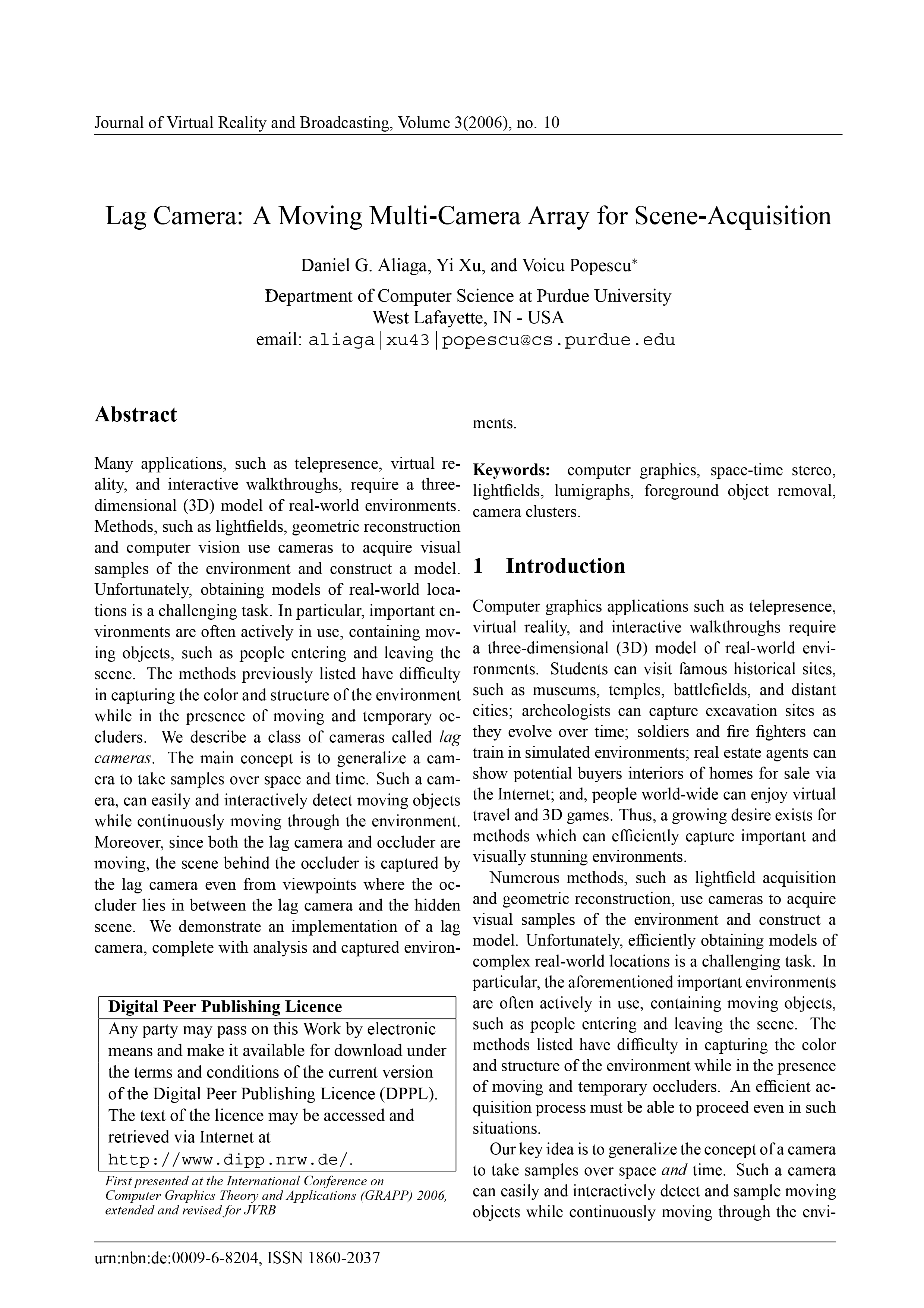Lag Camera: A Moving Multi-Camera Array for Scene-Acquisition
DOI:
https://doi.org/10.20385/1860-2037/3.2006.10Keywords:
camera clusters, computer graphics, foreground object removal, lightfields, lumigraphs, space-time stereoAbstract
Many applications, such as telepresence, virtual reality, and interactive walkthroughs, require a three-dimensional(3D)model of real-world environments. Methods, such as lightfields, geometric reconstruction and computer vision use cameras to acquire visual samples of the environment and construct a model. Unfortunately, obtaining models of real-world locations is a challenging task. In particular, important environments are often actively in use, containing moving objects, such as people entering and leaving the scene. The methods previously listed have difficulty in capturing the color and structure of the environment while in the presence of moving and temporary occluders. We describe a class of cameras called lag cameras. The main concept is to generalize a camera to take samples over space and time. Such a camera, can easily and interactively detect moving objects while continuously moving through the environment. Moreover, since both the lag camera and occluder are moving, the scene behind the occluder is captured by the lag camera even from viewpoints where the occluder lies in between the lag camera and the hidden scene. We demonstrate an implementation of a lag camera, complete with analysis and captured environments.
Published
2006-12-13
Issue
Section
GRAPP 2006





